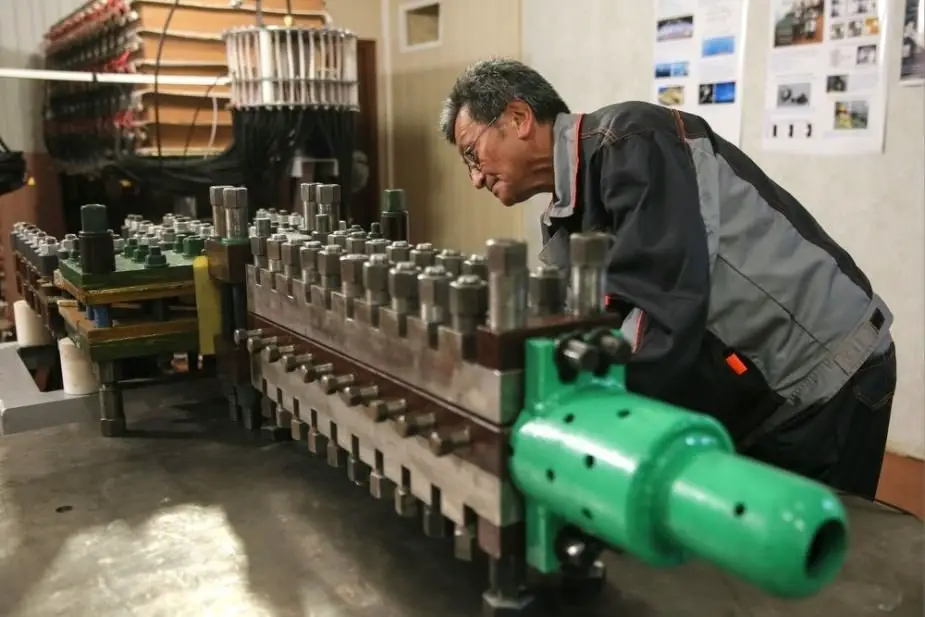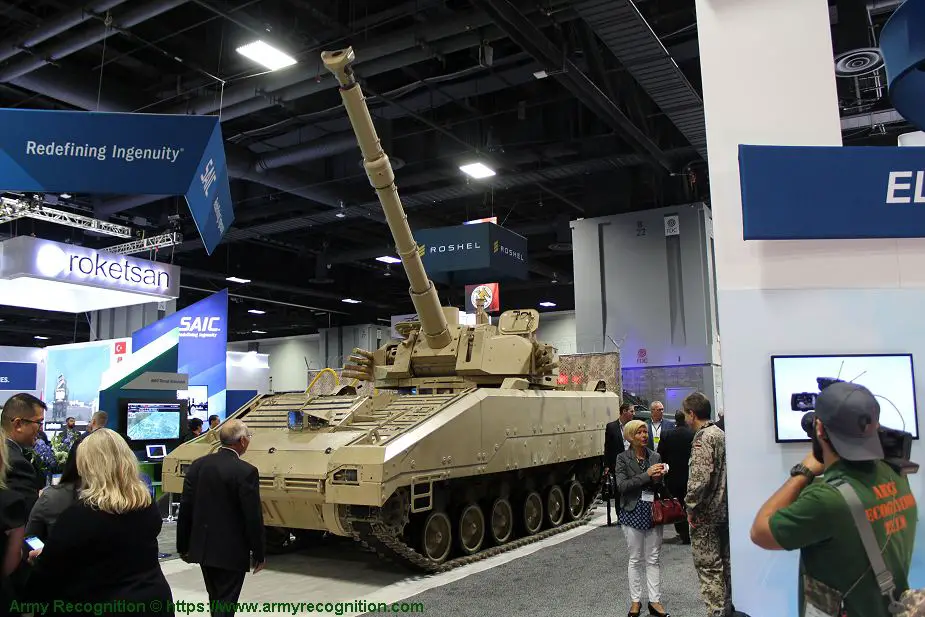Siinäpä malli päivittää meidän 130 K 54:t ajan tasalle ainakin a-tarvikkeen näkökulmasta?
Jos vaan on yhteensopiva ampumatarvike. Kranaateista en ole huolissani, vaan siitä panosjärjestelmästä.
Follow along with the video below to see how to install our site as a web app on your home screen.
Note: This feature may not be available in some browsers.
Siinäpä malli päivittää meidän 130 K 54:t ajan tasalle ainakin a-tarvikkeen näkökulmasta?

Wiki kertoo meillä olevan 76 kpl 130mm kanuunoita. joiden kaikkien konversio olisi näillä arvauksila siis noin 40 mio euroa. Liekö vaivan väärti.

https://www.armyrecognition.com/wea...ectromagnetic_forces_successfully_tested.htmlA team of Russian scientists has successfully further tested the country's first railgun, which relies on electromagnetic forces rather than explosives or propellant. According to experts at the Institute of High Temperatures’ branch in Shatura, just outside Moscow, the railgun can fire shells at an incredibly fast speed of 3 kilometers per second, which is well enough to cut through any type of armor existing today. During the latest test, a 15-gram plastic cylinder fired by the railgun went through an aluminum plate several centimeters thick.
Ulkonäkö ei tee toimivuutta eikä tappavuutta, mutta onhan jenkkien Blitzer hieman eri näköinen kone kuin tuo Venäjän raidetykin proto mikä näyttää lähinnä opinnäytetyönä tehdyltä vesileikkurilta
Tai kun Kuivasaaren 305mm ampui kunnialaukaukset Helsingin 200 vuotis juhlissa pääkaupunkina. Seistiin kauppatorilla ja sinne asti tuntui laukauksen paine vatsassa.
https://www.armyrecognition.com/oct...de_excalibur_precision_guided_projectile.htmlRaytheon and the U.S. Army completed development of a revolutionary capability for cannon artillery by upgrading the combat-proven Excalibur precision-guided projectile. The Excalibur Shaped Trajectory, or EST, variant will enable soldiers to eliminate targets in hard-to-reach locations by selecting the projectile's terminal or final phase attack angle.
With the Excalibur EST munition, soldiers can attack a bunker positioned on the opposite side of a mountain slope, target a multi-story building from the side rather than the top or defeat enemy assets positioned under highway overpasses. "This new version of Excalibur represents a major leap forward in capability for this already advanced guided projectile," said Kim Ernzen, Raytheon Land Warfare Systems vice president. "With these enhancements, enemy forces can no longer hide from the long arm of Excalibur."
The EST variant was successfully demonstrated in August 2018 at the U.S. Army Yuma Proving Ground, Arizona, and is now being deployed to U.S. forces. This capability will be made available to allies approved to procure the Excalibur projectile through foreign military sales.
With more than 1,400 rounds fired in combat, Excalibur is the revolutionary, extended-range, precision munition for the U.S. and international artillery forces. The weapon is fully qualified in multiple systems, including the M777, M109 series, M198, the Archer and PzH2000. It's also been tested in the AS90, K9 and G6 howitzers, with plans to integrate it with other mobile artillery systems.
In addition to the Excalibur EST variant, Raytheon has developed Excalibur S, a laser-guided version of the projectile. The company has also developed a 5-inch sea-based variant, the Excalibur N5 munition. It's expected to more than double the maximum range of conventional 5-inch munitions and will provide the same accuracy as the land-based version.

https://www.armyrecognition.com/aus...fletcher_70mm_laser_guided_rocket_system.htmlArnold Defense has developed the FLETCHER, a new generation of 70 mm laser guided rocket launcher system that can be easily integrated on combat vehicle,UGV (Unmanned Ground Vehicle) or small boat, to meet the modern demands of land-based, vehicle mounted and dismounted asymmetric warfare, for special and conventional forces. Visit Arnold Defense at AUSA 2018, Association of United States Army defense exhibition that takes place in Washington D.C. from the 8 to 10 October 2018.
Following the exceptional levels of interest expressed in the new FLETCHER Laser Guided Rocket Launcher system, Arnold Defense has been exploring a number of exciting ground and maritime-based concepts for their revolutionary new system.
The FLETCHER system, first unveiled a year ago in London at DSEI defense exhibition, has undergone highly successful test-firing and has now commenced initial low-rate production. With FLETCHER, Arnold Defense has extended the utility of their proven, highly capable rocket launcher from aviation platforms into the land environment. Using advanced rocket-guidance technology to meet the modern demands of land-based, mounted and dismounted asymmetric warfare, FLETCHER has been optimized for use by both special and conventional forces to provide surface-to-surface precision effect.
The wider concepts now being explored further expand FLETCHER’s utility into the arena of Unmanned Ground Vehicles (UGV), naval and littoral platforms. The ability to mount FLETCHER on UGV will offer ground forces the capability to remotely support base or mobile defensive operations; giving considerablywider scope for the tactical siting of remotely operated, laser guided weapon systems, whilst significantly minimising exposure and risk to ground-based troops. Further to that, mounting FLETCHER on naval/littoral platforms will giftmaritime troopsa precision weapon system with a range of up to 5km that can be deployed and operated at a tactical level never previously available.
Jim Hager, President and CEO of Arnold Defense said “Since launching FLETCHER,Arnold Defense has exhibited the system widely on the international market, where it has garnered significant interest world-wide, especially from special operations units. Our rocket launchers are already internationally well-established on airborne platforms, so transitioning into the land and marine environments with FLETCHER is a natural progression”. He added: “These exciting new concepts will afford both land and maritime troops a transformational capability that has not previously been available without recourse to external air or aviation assets.”

https://www.armyrecognition.com/aus...e_of_saic_105mm_light_tank_mpf_programme.htmlIn November 2017, U.S. Army issued a Request for Proposal (RFP) for the Engineering and Manufacturing Development phase of its Mobile Protected Firepower (MPF) program. To maximize competition, the Army anticipates awarding up to two contracts for the EMD (Engineering & Manufacturing Development) phase in early Fiscal Year 2019.
In September 2018, it was announced that the U.S. Army plans to build first prototypes of light tanks for the Mobile Protected Firepower in the next several years. According to Major General David Bassett, programme executive officer for Ground Combat Systems, the new light tank will be a tracked combat vehicle weighs 25–35 tonnes, offering good level of protection and fire power.
The SAIC light tank is a joint project with ST Kinetics of Singapore and CMI Defence from Belgium to develop a new generation of combat vehicle that offers the U.S. Army an innovative solution that provides infantry forces access to combat environments in 21st century operations.
Based on ST Kinetics’ Land Systems sector Next Generation Armored Fighting Vehicle (NGAFV) chassis and CMI Defence’s Cockerill Series 3105 turret currently in production, SAIC will compete for an Engineering and Manufacturing Development (EMD) contract to build prototypes that incorporate a lightweight combat vehicle design while still providing mobility and lethality for U.S. Army units.
The ST Kinetics’ Land Systems sector Next Generation Armored Fighting Vehicle was presented for the first time to the public during the Singapore AirShow in February 2017. The vehicle is powered by a 710 hp MTU 8V-199 TE20 diesel coupled to a Kinetics Drive Solution (KDS) HMX3000, which provides a power-to-weight ratio of 24.5 hp/tone. This enables the vehicle to achieve a maximum stated speed of 70 km/h and operating range of 500 km.
The SAIC light is fitted with a two-man turret Cockerill 3105 designed and developed by the Belgian Company CMI Defence. The turret is armed with a NATO standard Cockerill 105mm HP gun able to fire standard ammunition but also anti-tank missile. The turret is fitted an ammunition auto-loading system with 12 to 16 rounds ready to fire. The turret offers high level of ballistic protection up to Level 5 STANAG 45469. The turret has a traverse of 360° with elevation from -10° to +42°.
In its standard configuration, the Cockerill 3000 Series weapon station provides full digital weapon stabilisation and computerised fire control to deliver high precision engagements. The turret is also equipped with thermal and day sights to offer 24-hour operation whether the vehicle is static or moving.

105mm MPF (Mobile Protected Firepower). En vieläkään ymmärrä mikä järki näissä 105mm aseissa on?
https://www.armyrecognition.com/aus...e_of_saic_105mm_light_tank_mpf_programme.html
Ettäs kehtaatkin postata tykistöön! Tuo on kevyt panssarivaunu...
